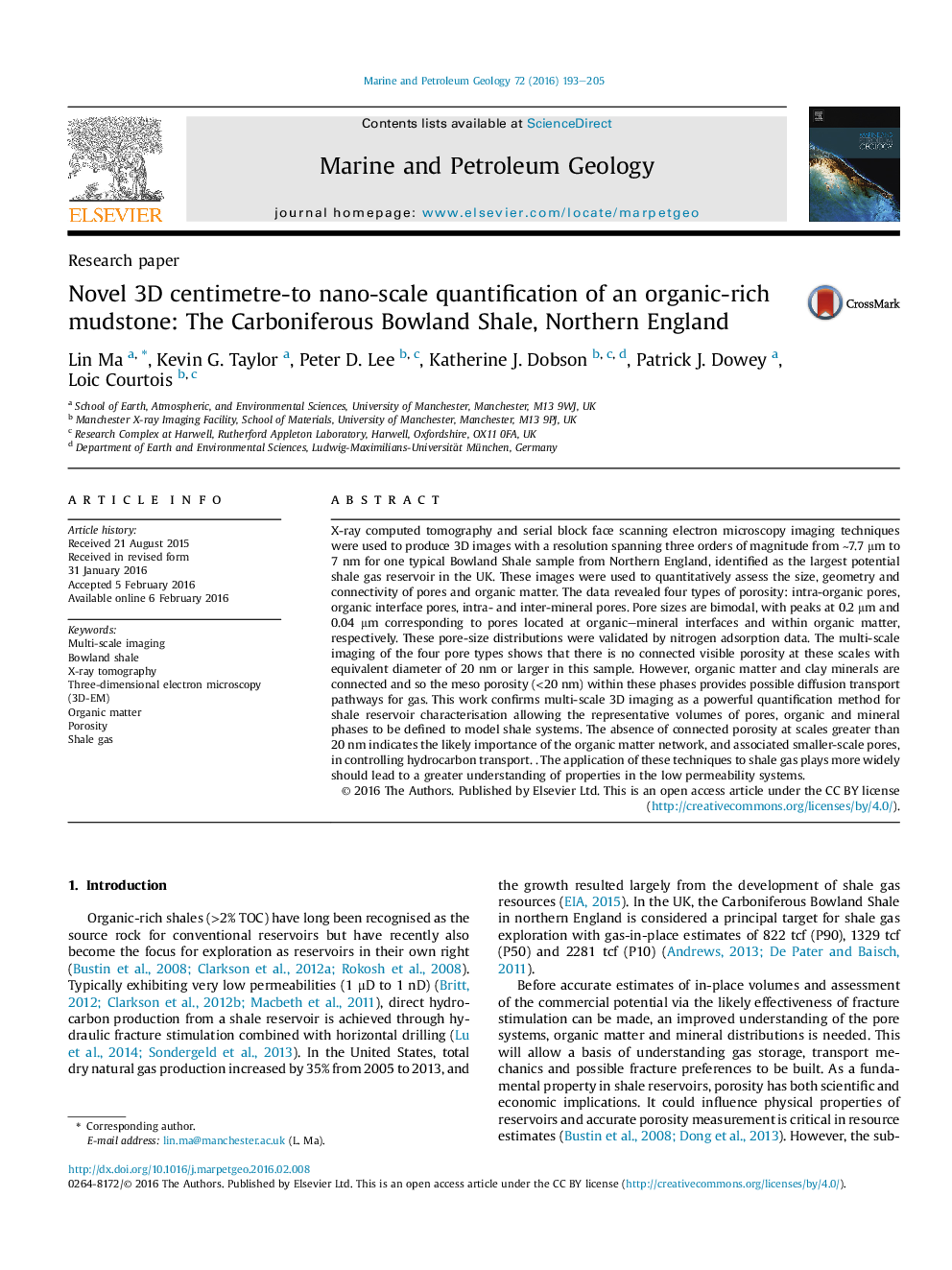| Article ID | Journal | Published Year | Pages | File Type |
|---|---|---|---|---|
| 6434489 | Marine and Petroleum Geology | 2016 | 13 Pages |
â¢X-ray tomography with 3D-EM are combined for imaging and quantification.â¢The features imaged are over a range of three orders of magnitude (7.7 μm-6.7 nm).â¢Quantification from images has a good agreement with nitrogen sorption, TOC and XRD.â¢The peaks of pore sizes distribution are correlative to pore types.â¢Organic matter and clay mineral connectivity is quantified for gas transport studies.
X-ray computed tomography and serial block face scanning electron microscopy imaging techniques were used to produce 3D images with a resolution spanning three orders of magnitude from â¼7.7 μm to 7 nm for one typical Bowland Shale sample from Northern England, identified as the largest potential shale gas reservoir in the UK. These images were used to quantitatively assess the size, geometry and connectivity of pores and organic matter. The data revealed four types of porosity: intra-organic pores, organic interface pores, intra- and inter-mineral pores. Pore sizes are bimodal, with peaks at 0.2 μm and 0.04 μm corresponding to pores located at organic-mineral interfaces and within organic matter, respectively. These pore-size distributions were validated by nitrogen adsorption data. The multi-scale imaging of the four pore types shows that there is no connected visible porosity at these scales with equivalent diameter of 20 nm or larger in this sample. However, organic matter and clay minerals are connected and so the meso porosity (<20 nm) within these phases provides possible diffusion transport pathways for gas. This work confirms multi-scale 3D imaging as a powerful quantification method for shale reservoir characterisation allowing the representative volumes of pores, organic and mineral phases to be defined to model shale systems. The absence of connected porosity at scales greater than 20 nm indicates the likely importance of the organic matter network, and associated smaller-scale pores, in controlling hydrocarbon transport. . The application of these techniques to shale gas plays more widely should lead to a greater understanding of properties in the low permeability systems.
